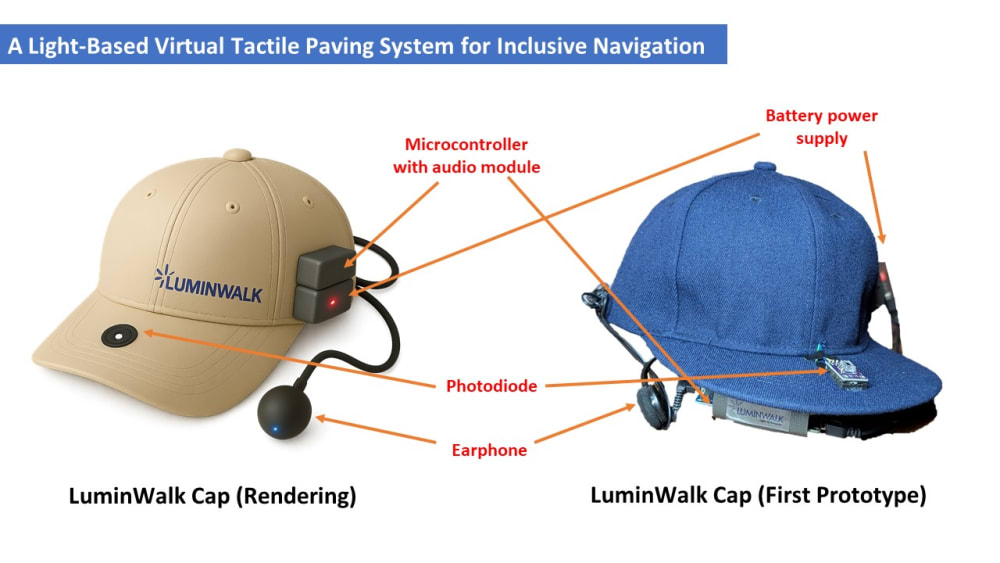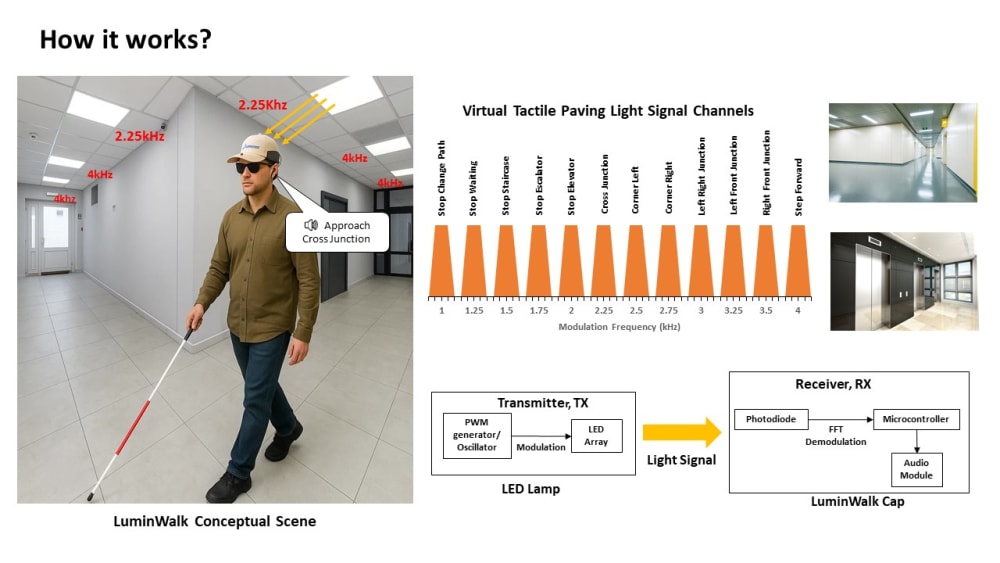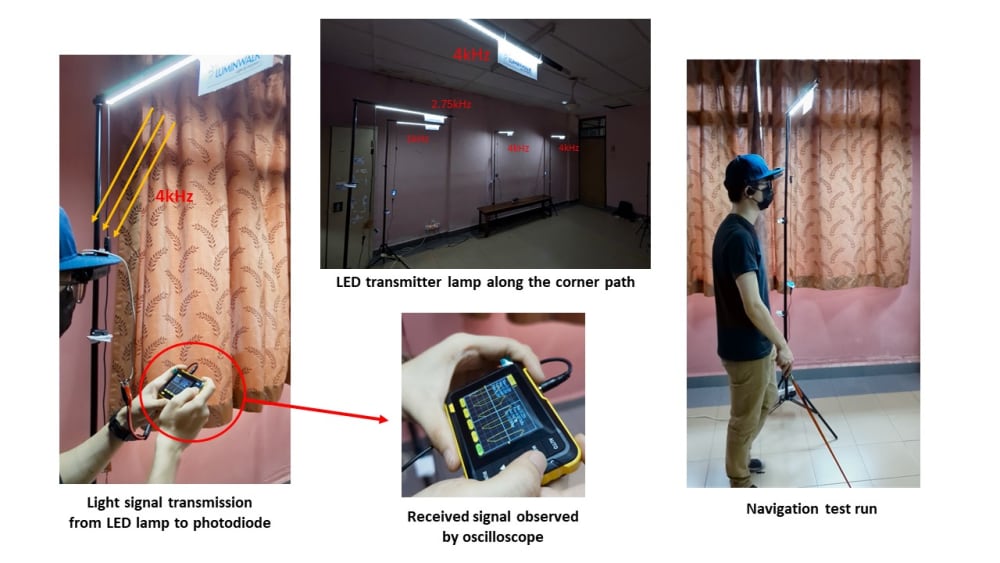Many public and indoor spaces still lack tactile paving for the visually impaired due to its installation complexity, inflexibility and high cost. To address this, we propose LuminWalk - a wearable cap system that leverages existing lighting infrastructure by transforming conventional LED lamps into light-based virtual tactile paving.
The idea was inspired by the observation that lighting infrastructure in public indoor spaces is far better maintained and equipped than tactile paving on the ground. Hence, this concept uses LED lighting to transmit modulated light signals, which can be detected using a photodiode mounted on a wearable cap. Since lighting is already essential for sighted individuals, this approach provides both illumination and navigational cues using the same infrastructure.
LuminWalk transforms LED lamps into signal transmitters that emit modulated light frequencies between 1 kHz and 4 kHz. These modulations are invisible to the human eye, ensuring that the illumination quality remains unaffected. There are 12 standard light signal channels within this bandwidth, each representing a unique environmental status. For example, 1.00 kHz indicates a path change, 1.25 kHz designates a waiting zone, and 2.25 kHz to 3.5 kHz guides users through various junctions. These standardized light signal channels make LuminWalk a universal system, similar to tactile paving, that can be applied in most public spaces to convey path conditions. It offers more detailed and flexible guidance compared to the traditional six tactile paving patterns.
The LuminWalk cap includes a photodiode, a low-power microcontroller, and an earphone to demodulate and convert the light signals into real-time audio feedback for navigation. This solution does not rely on smartphones or large AI models, making it simple and power-efficient. Furthermore, it offers a wider coverage area than conventional tactile paving, as each modulated light beam can cover several tactile tiles per lamp.
LuminWalk stands out by offering a low-cost, non-invasive, light-based solution that is safe and flexible unlike RF systems, which are unsuitable for sensitive environments such as hospitals and underground, and vision-based systems, which raise privacy concerns and require high computational memory. Most navigation systems need predefined maps or tagged locations, which limit adaptability and scalability. However, LuminWalk eliminates that dependency by providing universal, real-time feedback on path conditions.
From a feasibility and manufacturability standpoint, the cap requires only a photodiode, a microcontroller, and an audio set. For facilities, no additional beacons are needed; the existing ceiling lamps are adapted to modulate light signals, saving both installation and energy costs. Power consumption remains low due to the simplicity of the components and the use of existing infrastructure.
In terms of marketability, LuminWalk is well-suited for public walkways, hospitals, underground stations, and campuses. It offers real-time audio navigation and enables inclusive support for both visually impaired and sighted users. LuminWalk promotes sustainability by sharing existing lighting infrastructure, making it easy to implement, maintain, and scale. In summary, LuminWalk introduces a solution that uses light not just for vision, but for guidance—lighting up everyone and making inclusive navigation a reality.
Video
Like this entry?
-
About the Entrant
- Name:Khoo Boon Sheng
- Type of entry:teamTeam members:
- Nur Azman Azlee
- Software used for this entry:C++, MATLAB
- Patent status:none









